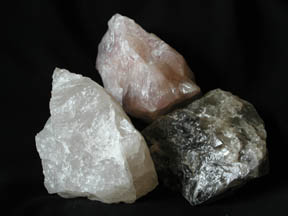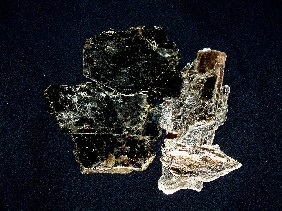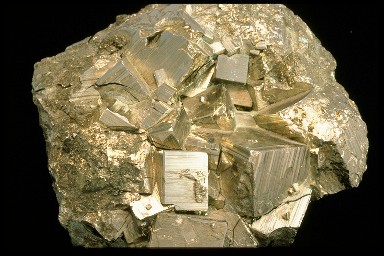
The sand dunes in White Sands National Monument, NM shown in (A) may someday be preserved in sandstone, a
sedimentary rock made of sand, like that shown in (B). Sand dunes move over time as the little sand grains bounce up one side of the dune by the
wind and then slide down the other side of the dune. The slide sides of dunes (called the lee sides) can be preserved in rock like in (B) where a canyon wall shows that millions of years ago sand dunes were a part of this landscape. If, over millions of years, you made a sand dune into solid rock and then cut it in half, it would look like the rock in (B). The little tilted layers of sandstone are from the lee sides of dunes. Most of them are tilted down to the right indicating that the dunes moved towards the right. A break in the rock layers (usually tilting down to the left) separates different dunes that moved over each other.
Back to the Table of Environments
(A) Bruce Molnia, Terra Photographics and (B) Martin Miller University of Oregon. Both images courtesy of Earth Science World Imagebank.
Last modified January 14, 2004 by Lisa Gardiner.
You might also be interested in:

Wind is moving air. Warm air rises, and cool air comes in to take its place. This movement creates different pressures in the atmosphere which creates the winds around the globe. Since the Earth spins,
...more
Spotting minerals is fun! There are many different types of minerals, each with a different name and a special set of characteristics. So, if you find a mineral that you do not recognize, you can use
...more
Quartz is one of the most common mineral in Earth’s crust! Silica (Si) and Oxygen (O) are the only elements within pure quartz. If a cooling magma has silica leftover after feldspars form, quartz is likely
...more
Mica minerals make some rocks sparkle! They are often found in igneous rocks such as granite and metamorphic rocks such as schist. They sparkle because light is reflected on their flat surfaces, which
...more
Feldspar is the most common mineral in the Earth’s crust, so you are very likely to find it in the rocks you collect! It is found it all of the three rock types, but is most common in intrusive igneous
...more
Olivine looks like little green crystals. It is typically found in some igneous and metamorphic rocks. Often the crystals are so small that you need to use your hand lens or magnifying glass to see them
...more
So far, over 2000 minerals have been found, and every year new ones are discovered. That's a lot of minerals! Don't worry! You don't need to know them all to be a rock hound. In fact, only a few dozen
...more















